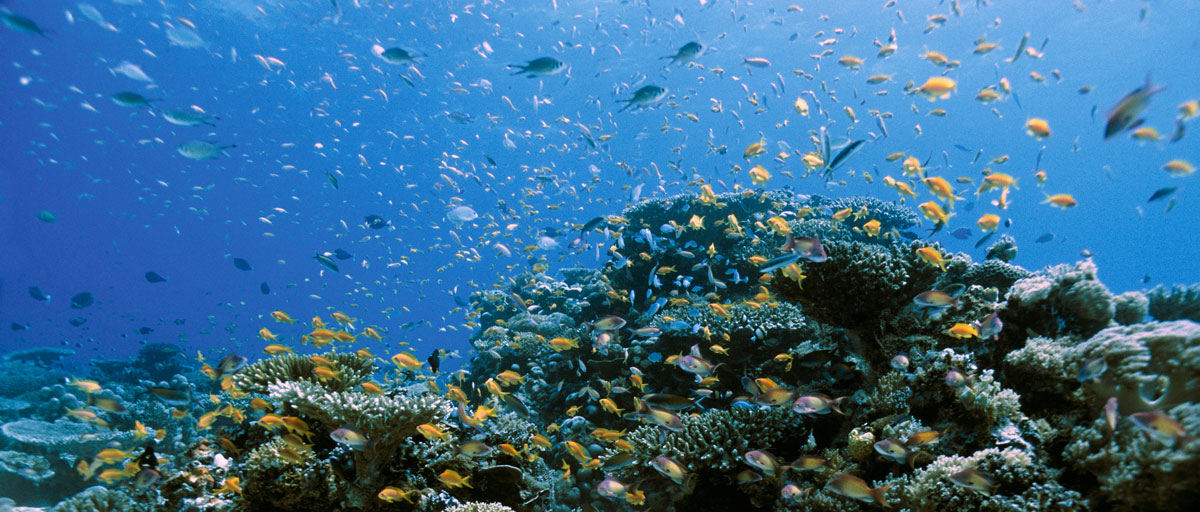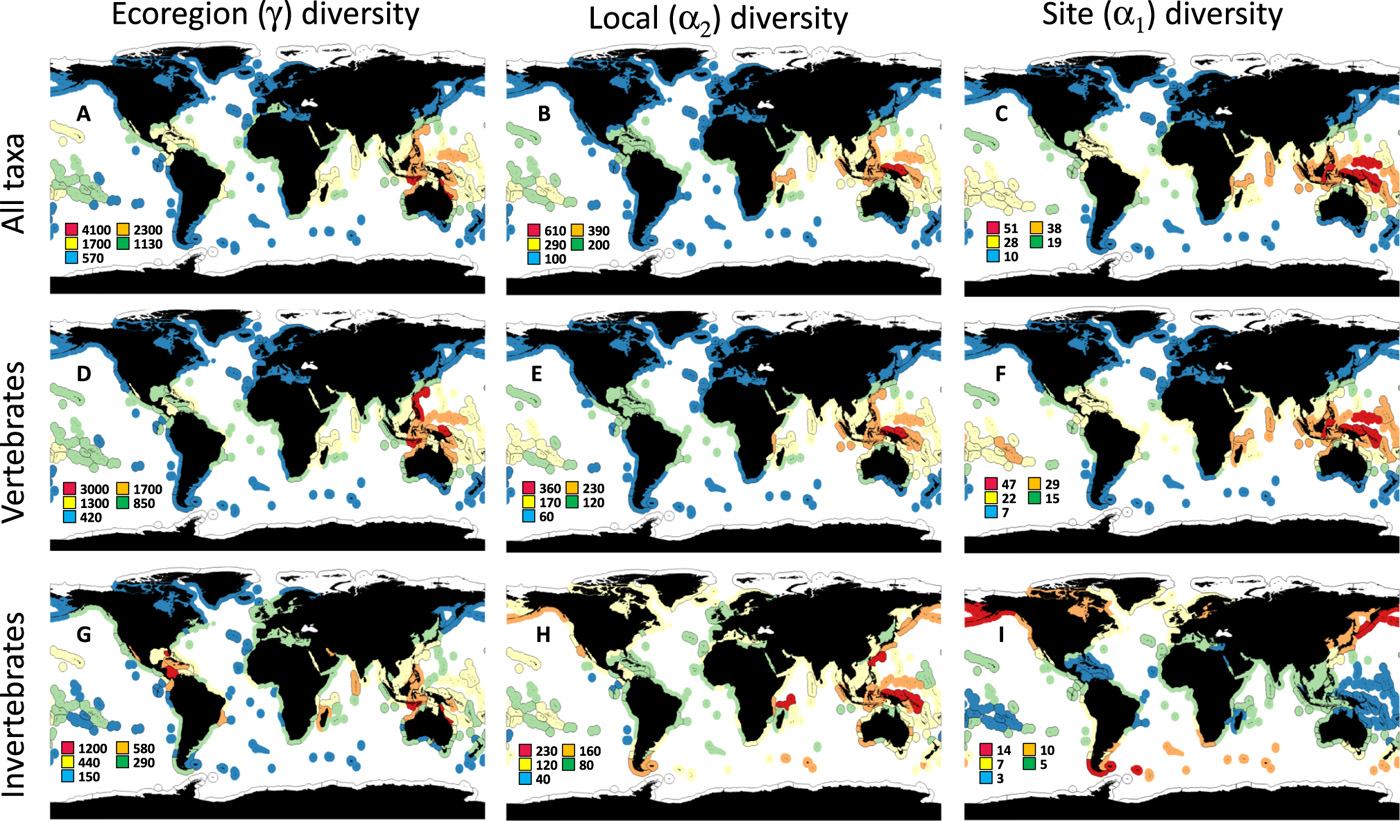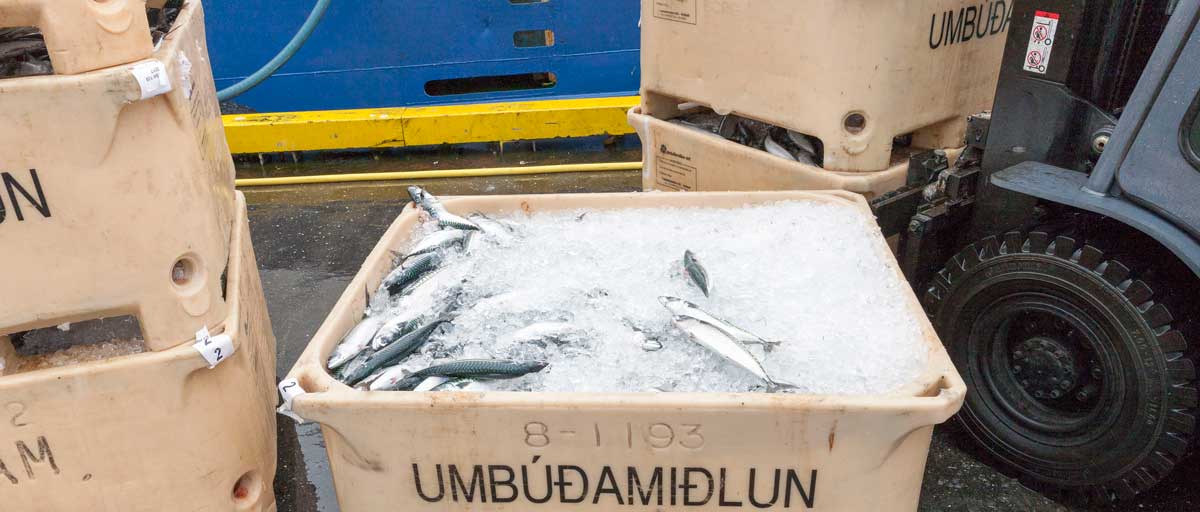
A new study published in Science Advances predicts that as the oceans warm, fish – which appear to be superior predators in warm water – will extend their ranges away from the equator and cause a decline in the diversity of invertebrates such as crabs, lobsters, sea urchins and whelks. Photo: J. Lokrantz/Azote
Bildtext får vara max två rader text. Hela texten ska högerjusteras om den bara ska innehålla fotobyline! Photo: B. Christensen/Azote
Climate change and marine diversity
Warmer climate, wider options
As predators extend their range because of warming waters, significant changes will hit marine ecosystems
- As waters become warmer, this will affect food webs, ecosystems and fisheries worldwide
- Fish will extend their ranges away from the equator and cause a decline in the diversity of invertebrates such as crabs, lobsters, sea urchins and whelks
- Ongoing monitoring is needed to allow the early detection of changes but only possible with the support of citizen scientists
A new study based on the first global survey of marine life by scuba divers has provided fresh insights into how climate change is affecting the distribution of marine life.
The research published in the journal Science Advances predicts that as the oceans warm, fish – which appear to be superior predators in warm water – will extend their ranges away from the equator and cause a decline in the diversity of invertebrates such as crabs, lobsters, sea urchins and whelks.
Using data collated by the citizen science project Reef Life Survey (RLS), a team from the Institute for Marine and Antarctic Studies (IMAS) found that total number of fishes and large invertebrates seen underwater changes little from the tropics to polar latitudes.
However, fish numbers are very high in the tropics but decline towards colder latitudes, while large invertebrates balance those patterns in the opposite direction.
Predators will affect abundance and diversity
Lead author and RLS founder, IMAS Professor Graham Edgar, said this distribution is likely to change as waters become warmer, affecting food webs, ecosystems and fisheries worldwide.
"The effects of climate change on marine life vary greatly between geographic regions," Professor Edgar says.
In South Eastern Australia and Tasmania the ‘tropicalisation’ of marine life is already underway, but similar effects have not yet been detected in New Zealand.
"Previous research suggested that climate change would directly affect the range of species due to rising temperatures," Edgar says.
Data collected by RLS divers during the world’s first systematic global survey of marine life show this is not the end of the story, explains co-author and centre researcher Stuart Kininmonth. They found that the local presence and abundance of a species reflect not only its need for particular temperatures and environmental conditions but also its ecological interactions.
As fish extend their range further from the equator with warming water, their advantage as predators will affect the abundance and diversity of large mobile invertebrates. Broad changes will likely spread across the ecosystem, affecting human activities such as fishing
Sturart Kininmonth, co-author
Citizen scientists needed
Kininmonth and his colleagues say ongoing monitoring of marine life at both local and regional levels is needed to allow the early detection of such changes. This would allow adaptive fisheries and conservation management and help to minimise the social and economic impacts.
“Species monitoring of shallow reef communities at national scales is only possible with the support of citizen scientists, such as the RLS divers who contributed data to our study,” Kininmonth says.
The RLS data set now includes information on 4000 species in 50 countries, allowing a better understanding of how and why species are distributed, while also providing an early-warning mechanism for climate-induced changes.

Patterns of global marine diversity.Geographical distribution of ecoregion richness (species richness per ecoregion), local richness (rarefied estimates of total richness for sites <12 km from each other), and site richness (mean species richness per transect) for vertebrates, invertebrates, and all taxa. Legends indicate upper bounds for species richness bins. Ecoregion totals are predictively modeled using random forest procedures, with data trained using observed data from 82 ecoregions and 16 environmental covariates for which data were globally available. Click on illustration to access article source
Methodology
The researchers calculated diversity at three scales for each of the 82 marine ecoregions of the world (of 233 worldwide) by averaging observed species richness per transect within each site and then averaging the mean site richness values per ecoregion (mean observed species density per 50 m2 RLS transect, α1 diversity); by estimating species richness at the local scale (extrapolated asymptotic richness for RLS sites within a 12-km span, α2 diversity); and by estimating the total number of species inhabiting each ecoregion (γ diversity). The latter was calculated using an equivalent approach to capture-mark-recapture, by compiling a list of all shallow reef species recorded in the Ocean Biogeographic Information System (OBIS), FishBase, and SeaLifeBase for each ecoregion and then applying a correction for the proportion of unobserved species by cross-validation with the RLS data for the same families of organisms.
Edgar, G.J., Alexander, T.J., Lefcheck, J. et. al 2017. Abundance and local-scale processes contribute to multi-phyla gradients in global marine diversity. Sci. Adv. 2017;3: e1700419








